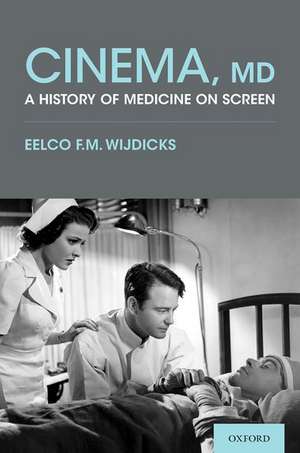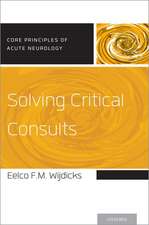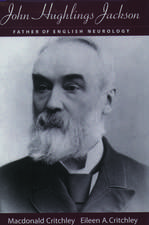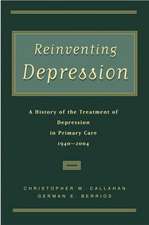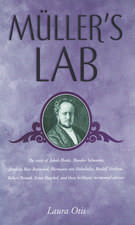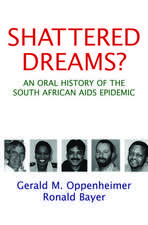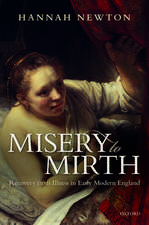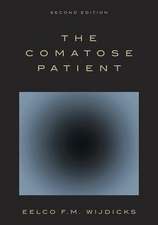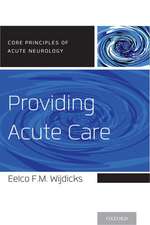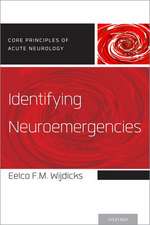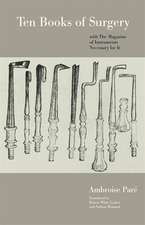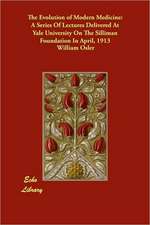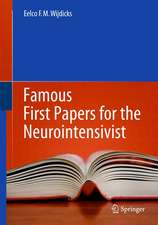Cinema, MD: A History of Medicine On Screen
Autor Eelco F.M. Wijdicksen Limba Engleză Hardback – 15 apr 2020
Preț: 580.95 lei
Preț vechi: 721.98 lei
-20% Nou
Puncte Express: 871
Preț estimativ în valută:
111.18€ • 115.64$ • 91.78£
111.18€ • 115.64$ • 91.78£
Carte tipărită la comandă
Livrare economică 03-09 aprilie
Preluare comenzi: 021 569.72.76
Specificații
ISBN-13: 9780190685799
ISBN-10: 0190685794
Pagini: 384
Dimensiuni: 236 x 155 x 23 mm
Greutate: 0.64 kg
Editura: Oxford University Press
Colecția OUP USA
Locul publicării:New York, United States
ISBN-10: 0190685794
Pagini: 384
Dimensiuni: 236 x 155 x 23 mm
Greutate: 0.64 kg
Editura: Oxford University Press
Colecția OUP USA
Locul publicării:New York, United States
Recenzii
The book provides a valuable source of academic information for historians and all those healthcare professionals interested in film.
This book is fascinating and outstanding and makes an excellent example of the crucial role that the medical humanities have in educating the public on medical issues. Likewise, it neatly underscores the vital role that cinema plays in shaping public views of the medical practice.
This is a unique piece in the current panorama of medico-historical literature, not only by its topic, but by its approach of going beyond first-degree reading of the movies, its investigation of the rationale of the realizations and ways directors created their scripts and conceived their actors, and also the modes of interpretation of the movies and by the cast. It is a dissection of movie images penetrated into the body of society and its mental image of medicine-the image of an image. A very interesting project!
Once in a while, a new book comes along that possesses unique information and knowledge that truly adds to the field of medicine in ways that expands our appreciation of what we do and do not do as physicians and health professionals. This book, authored by a senior and highly respected neurologist, is such a book.
A big, sweeping survey of the films that throughout the history of the cinema have touched on diseases and afflictions, every imaginable medical trope and theme, from silents to modern times, classic titles as well as forgotten rarities, with fascinating nuggets of research and intelligent commentary sprinkled throughout a text that is never less than lively.
How does medicine look through the lens of filmmakers? CINEMA, MD explores the many links between the art of film and the art of medicine in an entertaining and easy-to-grasp way. For an audience of millions, movies have strongly established optical and social images of doctors and diseases, emergencies and epidemics, magical interventions and malpractice. In 13 thematic chapters, this remarkable book reviews more than 400 carefully selected fiction films and documentaries from the silent era up to the present. The reader can expect a unique, well documented and fascinating dialogue between a cinematic view of medical progress and historical interpretation of the healing art. In short: A must-have for health professionals and students interested in medical humanities, media scholars and critics.
Clearly a labor of love, Dr. Wijdicks' engaging study of the complex representations of medicine in the cinema both enlightens and entertains. Although doctors generally score well in polls of public trust, film directors do not always agree. This volume tackles the heroic doctor but also more sinister practitioners, including a powerful section on the Nazi period. It invites its readers to view films actively and offers the critical tools to undertake this stimulating exercise.
Dr. Wijdicks has produced an incredibly wide ranging and thought-provoking analysis of the ways in which medicine and been used and abused on the silver screen since the dawn of cinema. From the rise and fall of the once God like surgeon, to cinematic treatments of death and dying, movies both inform and reflect contemporary thinking. With the careful selection of films to illustrate each chapter, Wijdicks provides a witty and fascinating insight into the ways in which medicine has shaped society over the past 100 years.
This book is fascinating and outstanding and makes an excellent example of the crucial role that the medical humanities have in educating the public on medical issues. Likewise, it neatly underscores the vital role that cinema plays in shaping public views of the medical practice.
This is a unique piece in the current panorama of medico-historical literature, not only by its topic, but by its approach of going beyond first-degree reading of the movies, its investigation of the rationale of the realizations and ways directors created their scripts and conceived their actors, and also the modes of interpretation of the movies and by the cast. It is a dissection of movie images penetrated into the body of society and its mental image of medicine-the image of an image. A very interesting project!
Once in a while, a new book comes along that possesses unique information and knowledge that truly adds to the field of medicine in ways that expands our appreciation of what we do and do not do as physicians and health professionals. This book, authored by a senior and highly respected neurologist, is such a book.
A big, sweeping survey of the films that throughout the history of the cinema have touched on diseases and afflictions, every imaginable medical trope and theme, from silents to modern times, classic titles as well as forgotten rarities, with fascinating nuggets of research and intelligent commentary sprinkled throughout a text that is never less than lively.
How does medicine look through the lens of filmmakers? CINEMA, MD explores the many links between the art of film and the art of medicine in an entertaining and easy-to-grasp way. For an audience of millions, movies have strongly established optical and social images of doctors and diseases, emergencies and epidemics, magical interventions and malpractice. In 13 thematic chapters, this remarkable book reviews more than 400 carefully selected fiction films and documentaries from the silent era up to the present. The reader can expect a unique, well documented and fascinating dialogue between a cinematic view of medical progress and historical interpretation of the healing art. In short: A must-have for health professionals and students interested in medical humanities, media scholars and critics.
Clearly a labor of love, Dr. Wijdicks' engaging study of the complex representations of medicine in the cinema both enlightens and entertains. Although doctors generally score well in polls of public trust, film directors do not always agree. This volume tackles the heroic doctor but also more sinister practitioners, including a powerful section on the Nazi period. It invites its readers to view films actively and offers the critical tools to undertake this stimulating exercise.
Dr. Wijdicks has produced an incredibly wide ranging and thought-provoking analysis of the ways in which medicine and been used and abused on the silver screen since the dawn of cinema. From the rise and fall of the once God like surgeon, to cinematic treatments of death and dying, movies both inform and reflect contemporary thinking. With the careful selection of films to illustrate each chapter, Wijdicks provides a witty and fascinating insight into the ways in which medicine has shaped society over the past 100 years.
Notă biografică
Eelco Wijdicks is Professor of Neurology at Mayo Clinic College of Medicine, Rochester Minnesota, and Associate Professor of the History of Medicine. He has written on film in Neurology, JAMA Neurology, Neurology Today, The Lancet Neurology and Mayo Clinic Proceedings. His book Neurocinema: When Film Meets Neurology was published in 2015.
